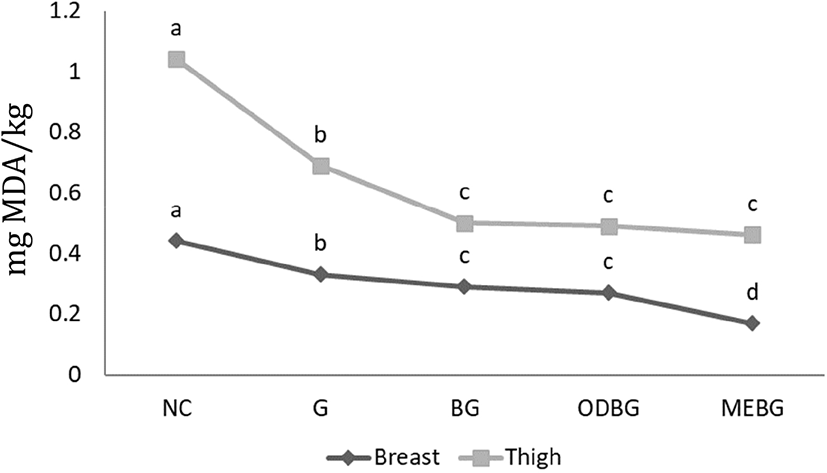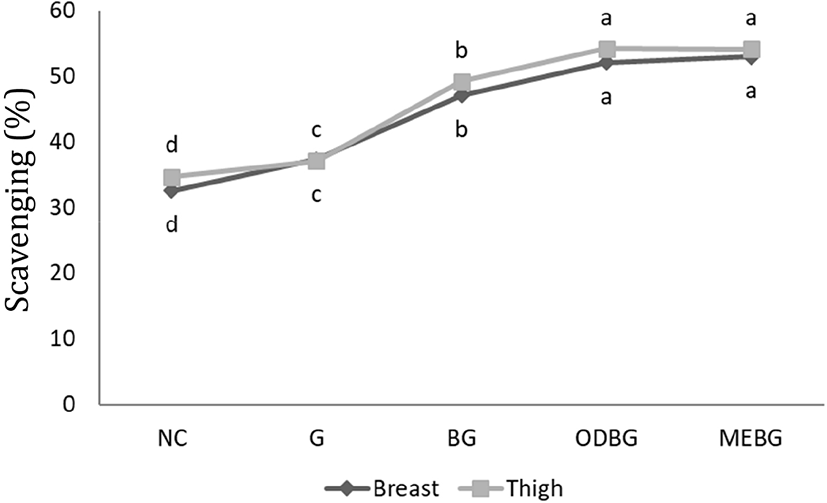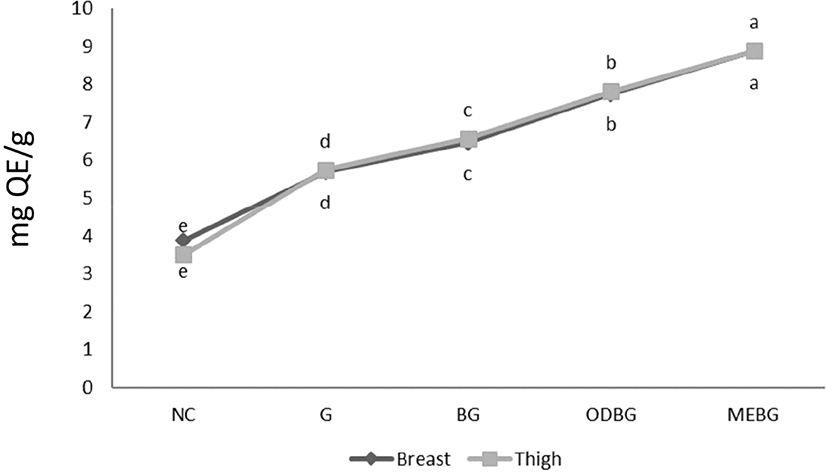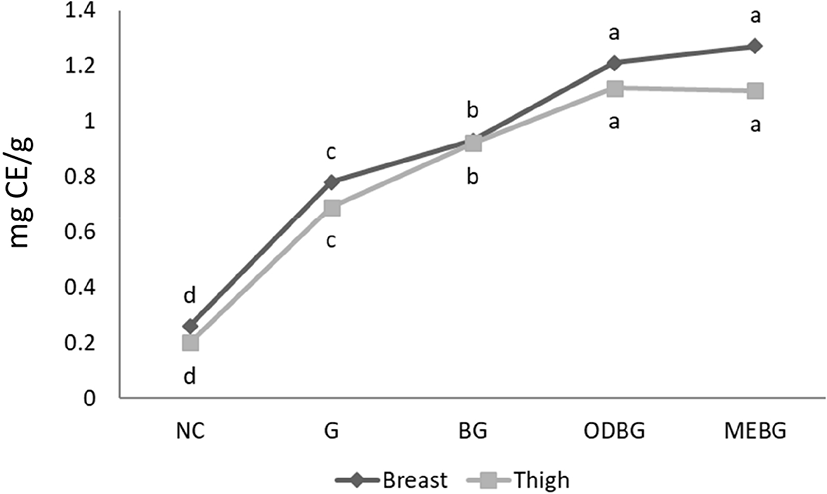Introduction
Prolonged life expectancy is a goal for most people to commit to a healthy lifestyle. In advanced countries, the concept of a healthy lifestyle, including mental and physical exercise, maintenance of caloric restriction, and appropriate healthy diet selection aims to prevent systemic and neurodegenerative disorders rather than cure them (Leri et al., 2020). Clinical and population studies emphasize that proper food consumption, particularly functional food, plays a significant role in preventing aging-associated illnesses, including cardiovascular disease, type 2 diabetes mellitus, cancer, and decline in cognitive function (Tangney et al., 2011). Therefore, experimental studies have been conducted in the last decade to investigate the effects of various plant bioactive compounds on human health, in which polyphenols are highlighted as the main substance that is significantly advantageous in repairing metabolism regulation, lipid, protein, and DNA homeostasis, and boosting the immune system (Islam et al., 2016; Sultan et al., 2014; Zhang et al., 2010). In addition to its health benefits, the inclusion of meat products with phenolic extracts derived from plants helps sustain the protective effect against deteriorative consequences from lipid oxidation and contributes to the development of preferable flavors (Barido et al., 2020a; Lee et al., 2021).
Chicken meat is one of the most favorable protein sources based on its nutritional content. It is an affordable protein source that, compared to red meat, contains superior nutritional characteristics, such as essential amino acids, lower saturated fatty acids, and higher polyunsaturated fatty acids (Park et al., 2020). In Korea, the trend of chicken meat consumption is continuously increasing over the years. In 2019, a report from the United States Department of Agriculture (USDA) mentioned that the total consumption of chicken meat, including commercial broiler, white-semi broiler, spent hen chicken, and Korean native chicken reached a total of 986 million birds slaughtered for consumption purposes (USDA, 2020). Korean chicken soup (Samgyetang) is a well-known dish prepared by boiling chicken meat with ginseng and certain medicinal plants. It is widely consumed during the summer season and is believed to have health benefits (Jeong et al., 2020). With the rapid technological advances, the meat industries have endeavored to provide ready-to-eat (RTE) Samgyetang products that shorten the preparation time and are easy to prepare. Among the several methods, retorting is a widely applied manufacturing method in which a retort pouch is used before being subjected to high temperature-high pressure cooking at 121.1°C and 1.5 kgf/cm2 (Kim et al., 2020). However, continuous exposure to high-temperature cooking can lead to the formation of lipid oxidation products (LOPs) that negatively alters the nutritional content, characteristic quality, and taste- and flavor-related compounds. In addition, the derivatives of LOPs bound to triglycerides and phospholipids can initiate the occurrence of atherosclerosis and premature aging (Rodriguez-Estrada et al., 1997).
Clinical and evidence-based studies have revealed that the presence of polyphenol extract obtained from black garlic (BG) can significantly prevent cardiovascular disease, atherosclerosis, and aging-related diseases (Ryu et al., 2017; Tangney et al., 2011; Yuan et al., 2016). The altered bioactive compounds resulting from the relatively high temperature (60°C–90°C) and high humidity (60%–80%) processing of raw garlic (RG) over 3–7 weeks is assumed to be responsible for its functionalities (Lee et al., 2010; Lei et al., 2012). During aging, the γ-glutamyl cysteine, which is the main precursor that can be converted into allicin via allinase, is converted into sulfur-containing substances such as S-allyl cysteine, S-allyl mercapto cysteine, diallyl sulfide (DAS), diallyl disulfide (DADS), diallyl trisulfide (DATS), and diallyl tetrasulfide. The above-mentioned substances were proven to possess a stronger antioxidative effect than RG through the upregulation of reducing power, hydroxyl radical, 2,2-diphenyl-1-picrylhydrazyl (DPPH), 2,2'-azino-bis(3-ethylbenzothiazoline-6-sulfonic acid (ABTS), and nitrite scavenging activities (Ryu et al., 2017). In addition, the occurrence of the Maillard reaction during aging initiates the reaction between sugars and amino acids to produce a sweet taste and a brown color (Czompa et al., 2018). Several studies have been conducted to measure the efficacy of BG extract in meat products, in which the extensive protection of quality of spent duck nugget during storage was observed (Lishianawati et al., 2021). In addition, the inhibition of lipid oxidation in pork patties was also observed following treatment with aged and fermented garlic extracts (Lee et al., 2019). However, to the best of our knowledge, sufficient information on its inclusion effect on RTE chicken soup products is not well presented, particularly with that of pre-treated BG extracts. Therefore, this study aimed to investigate the effect of pre-treated BG extract on the quality characteristics and antioxidative properties of RTE Korean chicken soup.
Materials and Methods
BG cloves were purchased from Haena Food (Seoul, Korea) (product serial number: 20160506929-1). The phenolic solution from RG and BG was obtained according to the method described by Kimura et al. (2017). After mixing ground-treated garlic in dry base weight with 10 volumes of distilled water, the mixture was finely blended and placed in a water bath at 80°C for 1 h. The extracted solution was directly brought into the chilling room (4±2°C, 1 h) and subsequently filtered using Whatman filter paper number 1. The antioxidant activities, total phenolic and flavonoid contents, moisture, and pH values were measured, and their values are presented in Table 1. For the pre-treatment of BG, oven-drying and encapsulation with MD were selected to compare its efficacy with that of RG and BG. Oven-dried treatment (180°C, 15 min) was selected due to its better antioxidative at 62.77% in scavenging DPPH radicals compared to that of freeze-dried BG (–70°C, 24 h) at 56.88%. Encapsulation with MD was performed considering the vulnerability of phenolic extracts to high-temperature processing (Ray et al., 2016). The addition of extract solution from various preparations of BG to the chicken soup was set at 5% (v/w) from the total weight, and the negative control was set with no addition of garlic extract.
The broth was prepared according to a method described by (Jeong et al., 2020) by boiling 8 L of distilled water with 8 Samgyetang ingredient pouches, which consisted of 5 g Astragalus membranaceous root, 8.5 g of the mulberry branch, 8 g of Kalopanax septemlobus branch, 2 g of licorice, and 9 g of Siberian ginseng with 0.6% salt addition for 45 min. After putting fat trimmed carcasses (200±10 g) that was stuffed with rice into retort pouches, 200 mL of prepared broth and 100 mL of phenolic extract from previously treated garlic were added. While for the negative control, 300 mL of prepare broth was added. This study compared five different groups wherein RG extract, BG extract, oven-dried BG extract, and maltodextrin-encapsulated BG extract were used as treatments, whereas the negative control was set with no addition of garlic extracts. Each treatment group consisted of four replicates. The retorting was performed using an autoclave (AC-13, Jeio Tech., Daejeon, Korea) at 121.1°C and 1.5 kgf/cm2 for 1 h. Filtration using a stainless mesh filter (600 μm) was performed on processed samples which were subsequently subjected to further analyses of quality characteristics and antioxidative status.
Visual attributes were determined across the chicken sample surfaces at five different locations using a chromameter (CR-400, Konica Minolta Sensing, Osaka, Japan). The chromameter calibration was set according to the protocol of Commission International de l'Eclairage (2004) for lightness (CIE L*), redness (CIE a⋆), and yellowness (CIE b⋆), using a white plate (2° observer, Illuminant C: Y=93.6, x=0.3134, y=0.3194).
The proximate composition of the retorted chicken samples was analyzed according to the AOAC (2012). The moisture percentage was recorded from 1 g sample after oven drying at 105°C for 24 h. Crude protein content was measured according to the Kjeltec system procedure (2200 Kjeltec Auto Distillation Unit, Foss, Hillerød, Denmark). Crude fat was extracted by the Soxhlet extraction method for 48 h, and the crude ash content was obtained after burning in a muffle furnace (LEF-115S, Daihan Labtech, Namyangju, Korea) at 550°C. All analyses were performed in triplicate.
The pH value was tested for the homogenized samples in triplicate. After mixing 5 g sample with 45 mL of distilled water in a homogenizer (PH91, SMT, Tokyo, Japan), the pH of stirred slurry samples was measured using a pH meter probe (Seven Easy pH, Mettler-Toledo GmbH, Schwerzenbach, Switzerland) that had previously been calibrated.
The shear force was measured in triplicate using a TA-XT2i Plus (Stable Micro Systems, Surrey, UK). Its value was determined on 1.5×1.5×1.5 cm3 samples placed under the V blade and cut with constant speed parameters.
The water holding capacity (WHC) percentage was obtained following the protocol of Kristensen and Purslow (2001) by centrifugation. The WHC percentage was obtained by calculating the ratio of the total moisture content to the remaining water volume after being subjected to boiling in a water bath followed by centrifugation. The cooking loss percentages of the samples were obtained by calculating the weight before and after cooking [(W1–W2)–W1].
The 2-thiobarbituric acid reactive substances (TBARS) method was used to quantify the malondialdehyde concentration after treatment. Briefly, chicken breast samples (0.5 g) were prepared in triplicate in a 25 mL TBARS test tube, adding an antioxidant mixture (0.1 g). Three milliliters of 1% TBA in 0.3% NaOH was added to the mixture, which was then vortexed, followed by the addition of 17 mL of 2.5% trichloroacetic acid in 36 mM HCl. After the tubes were sealed, they were heated in a water bath (BW-20G, Biotechnical Services, North Little Rock, AR, USA) at 100°C for 30 min. The tubes were directly immersed in ice water once heating was completed. Every 5 mL of aqueous sample was moved to a new 15 mL conical tube and mixed with 3 mL of chloroform. The mixtures were subsequently subjected to centrifugation at 2,400×g for 30 min at 4°C (1248R, Labogene, Lynge, Denmark). The absorbance was recorded at 532 nm using a UV spectrophotometer (UV-mini 1240 PC, Shimadzu, Kyoto, Japan) and compared against a blank.
The antioxidant activities of the samples were measured using DPPH assays according to the method by Islam et al. (2016) in triplicate. The results were expressed as a scavenging percentage of free radicals. Meanwhile, the total polyphenol content (TPC) and total flavonoid content (TFC) were performed in triplicate according to a method by Xu and Chang (2007). The TPC was measured at 765 nm and expressed as gallic acid equivalents (mg GAE/g sample). Whereas, the TFC was measured at 510 nm and expressed as catechin equivalents (mg CAE/g sample).
Results and Discussions
The total antioxidants and polyphenols in the garlic extracts were compared, and the results are presented in Table 1. The antioxidant activity measured by DPPH assay showed that the extract solution from oven-dried BG had the highest free radical scavenging percentage, followed by BG, maltodextrin-encapsulated BG, and RG extract (p<0.05). Similarly, the TPC and TFC were significantly higher in BG groups than in RG, where BG pre-treated through oven drying exhibited the highest concentration. The pH value and moisture content declined as a result of processing RG into BG, which agrees with the findings of Kimura et al. (2017) and Lishianawati et al. (2021). The nutritional alteration of BG depends on the condition during BG manufacturing. Relatively high temperature (60°C–90°C) and humiditiy (60%–80%) induce the conversion of key substances from garlic into heyns and amadori compounds, thus initiate the formation of sulfur-containing compounds such as S-allyl cysteine, S-allyl mercapto cysteine and DAS via Maillard reaction (Yuan et al., 2016). In the other hand, in terms of pre-treatment with oven drying, the increased in antioxidant activities were reported caused by the inactivation of polyphenol oxidase, peroxidation enzymes and ascorbate oxidase following thermal treatment (Yamaguchi et al., 2003). Moreover, the cleavage of long chain into short chain polyphenol during high temperature treatment was also mentioned to responsible for its increase activities (Yu et al., 2009).
The visual attributes of the retorted Samgyetang varied with different treatments, and the results are presented in Table 2. A significant intensification of red color was observed in both breast and thigh meat treated with BG extracts, regardless of pretreatment, compared to the negative control and RG (p<0.01). The yellowness in the BG-treated groups was significantly higher than that in the negative control. No significant differences in color parameters were found among the garlic treated groups in thigh samples, whereas slight differences were observed in breast samples; the darker color of both breast and thigh meat was observed following treatment with BG extract at any pre-treatments compared to the negative control and RG (p<0.01). In addition, chicken meat samples were the lightest in the negative control without any addition of garlic extracts. In addition to the Maillard reaction, which possibly creates a brownish-red color through the interaction between high-temperature cooking, sugars, and amino acids (Hunt et al., 1991), the basic attribute of BG extract solution in dark brown color may interfere with the development of more red and yellow, and the darker color in chicken meat. This result is similar to a previous report by Jin et al. (2015), who stated the possible effect of the phenolic extract on the visual attributes of meat through permeation into meat muscle.
The moisture percentage was the only proximate parameter affected by adding BG extract. As shown in Table 3, the encapsulated and oven-dried groups retained a significantly higher moisture percentage in breast meat than the negative control and RG treated groups (p<0.01). In thigh meat, the highest percentage of moisture retention was observed for maltodextrin-encapsulated samples (67.94%). The crude fat percentage ranged from 2.33%–2.69% in the breast and 4.88%–5.72% in the thigh, where insignificant differences were found among samples (p>0.05). Similarly, the crude protein and crude ash percentages were not significantly different across the samples. In this study, the proximate composition was within the range reported by Kim et al. (2020) in commercial broiler chicken processed through retorting. The higher moisture retained by the encapsulation group is assumed to be caused by the stronger osmotic-like force, which pulls up the water molecules to interact with the coating materials, thus inhibiting excessive evaporation during processing (Ballesteros et al., 2017).
The pH values of the retorted chicken soup after treatment with various garlic extracts are presented in Table 4. Its value was significantly different in the breast or thigh meat, where BG treated groups exhibited a significantly lower value than the negative control and RG treated groups (p<0.01). The pH value observed ranged from 6.36–6.54 in breast and 6.67–6.97 in thigh meat, respectively, and categorized as normal in commercial broiler chicken cooked through retorting (Barido et al., 2020a; Jeong et al., 2020; Kim et al., 2020). Analysis of texture properties measured by shear force value did not reveal a significant difference among retorted samples following treatment with various garlic extracts (p>0.05). During processing, pH was strongly affected by the added ingredients. Throughout the postmortem, meat may experience alterations in its metabolites as a result of biochemical interaction with added substances, which consequently changes its pH. Similar to this study, the declining pH value in BG-treated groups was highly influenced by the low phenolic solution extracted from BG at 4.30. This finding was in accordance with that of a previous study (Lishianawati et al., 2021).
Table 4 lists the results of cooking loss and WHC percentage after treatment with various garlic extracts on retorted chicken soup. Although a decline in pH was observed following treatment with BG extracts, both the water retention ability of the muscle and cooking loss were not detrimentally affected (p>0.05). Biochemical alterations during the postmortem period strongly correlate with changes in important economic traits, such as cooking loss (Barido et al., 2020b). When an extensive decline in pH activity is observed postmortem, extensive muscle shortening can also be identified, which leads to the expulsion of water molecules outside the meat environment. This condition will eventually generate a lower percentage of water retained within the muscle, thus initiating higher cooking loss during processing (Dang et al., 2018). The lower cooking loss is also strongly correlated with the lower juiciness perception of meat products (Barido and Lee, 2021; Jeong et al., 2020). The cooking loss and WHC found in this study were within the range reported in a previous study on commercial broilers (Jeong et al., 2020).
The TBARS assay quantified the concentration of LOPs, mainly malondialdehyde (MDA). In this study, as shown in Fig. 1, the addition of various garlic extracts to retorted chicken soup significantly inhibited the formation of MDA content compared to that in the absence of garlic extract (p<0.05). In addition, compared to the RG treated group, the TBARS value measured in both breast and thigh meat showed a significantly lower score after treatment with BG extract under any pre-treatment conditions (p<0.05). In contrast, the oven-dried BG extract group maintained a slightly better lipid oxidation inhibition than that of fresh BG. The reduction in MDA formation after treatment with various garlic extracts compared to the negative control ranged from 18.18% to 45.24%, with the lowest protection observed in garlic and the highest in maltodextrin-encapsulated BG extract. This is supported by the higher antioxidant activity measured by DPPH in BG treated groups than that of RG and negative control (p<0.05). The highest antioxidant activity as seen in Fig. 2 was recorded for chicken samples treated with maltodextrin encapsulated, and oven-dried BG extracts among the samples (p<0.05). However, no significant difference was observed in the antioxidative status of both breast and thigh meat treated with oven-dried and maltodextrin-encapsulated BG extracts (p>0.05).


The inhibition of lipid oxidation in highly susceptible meat types, such as poultry meat, with the addition of plants rich in polyphenols, has provided critical practical guidance for the meat industry. Lipid oxidation is a major threat to the quality of processed products by forming an off-flavor and shortening the shelf life (Lee et al., 2019; Lee et al., 2021). The reduction in lipid oxidation has been widely reported to depend on the antioxidant activities of the added ingredients. The results of this study agree with the findings of (Lee et al., 2019) in pork patties and (Lishianawati et al., 2021) in duck nuggets, wherein the addition of aged garlic significantly contributed to the higher antioxidative status and lower MDA content, respectively. Furthermore, the TBARS value obtained in this study was within the acceptable range for meat products of lower than 1 mg MDA/kg meat (Park et al., 1988).
Fig. 3 shows the TPC of retorted Samgyetang treated with various garlic extracts. Significant differences were observed, in which the order of TPC from the highest to lowest was maltodextrin-encapsulated BG, oven-dried BG, fresh BG, RG, and negative control, respectively. Samgyetang supplemented with maltodextrin-encapsulated BG extract had the highest TPC in both breast and thigh meat among the samples (p<0.01). In addition, BG treated by oven drying showed a significantly higher TPC than that of fresh BG (p<0.05). With regard to TFC (Fig. 4), the concentration was not significantly different between the encapsulation and oven-dried groups (p>0.05), wherein their TFC was found to be the highest among samples in breast and thigh meat, followed by the BG treated group, RG, and negative control groups (p<0.01). Furthermore, this study showed that the encapsulation of BG extract with MD could retain the highest TPC and TFC concentrations among samples by 84% and 49%, respectively, after high-temperature processing. These results for TPC and TFC were within the hypothesis, in which processed RG into BG significantly altered the nutritional content, particularly the generation of sulfur-containing substances, namely S-allyl cysteine and S-allyl mercapto cysteine DAS, DADS, diallyl trisulfide (DATS), and diallyl tetrasulfide. A comprehensive review by (Ryu et al., 2017) revealed that these compounds are responsible for higher TPC, TFC, and antioxidants in BG. The higher total polyphenols were affected by high-temperature processing to liberate more free polyphenols and alter their hydroxyl groups, thereby increasing their concentration (Choi et al., 2008). Higher total polyphenols strongly contributed to an improvement in antioxidative status. The variation in hydroxyl groups, aromatic rings, and conjugated structures is responsible for the functional chelation of metal ions, scavenging of free radicals, and contributing to the regeneration of α-tocopherol (Rice-Evans et al., 1996).


Conclusion
This study demonstrated the improvement in the characteristics of Korean chicken soup as a result of addition of pre-treated BG extracts. The increase in antioxidative status, which ranged from 6.91% to 59.75%, and the reduction of MDA formation (18.18%–45.24%) compared to the negative control was observed, wherein the BG extract that was previously subjected to encapsulation exhibited the highest activity. In addition, the encapsulation of BG extract with MD retained the highest TPC and TFC concentrations among the samples as 84% and 49%, respectively, after high-temperature processing. Furthermore, visual attributes were greatly influenced by BG extract addition. A significant intensification of red and yellow color in chicken samples was observed after treatment with BG extracts compared to that of the negative control and RG. The limited effect on meat quality indexes was documented in this study. In summary, this study recommended that the addition of BG extract previously subjected to encapsulation could improve the functionality and is advantageous as a functional ingredient in RTE Samgyetang.













